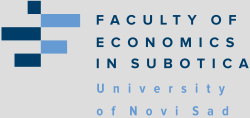Specific Influence of Knowledge Intensive and Capital Intensive Organizations on Collaborative Climate and Knowledge Sharing in SMEs
DOI:
https://doi.org/10.46541/978-86-7233-380-0_11Keywords:
Knowledge Management (KM), Small and Medium-Sized Enterprises (SME), Knowledge Intensive Organization (KIO), Capital Intensive Organizations (CIO), Collaborative ClimateAbstract
In this paper, the authors discuss knowledge management, with a focus on knowledge sharing. Knowledge
sharing is dependent on trust and cooperation, which are elements of organizational culture. One specific aspect of
organizational culture is of particular interest for knowledge sharing. This aspect consists of values, beliefs and
atmosphere that characterize common mental space accepted by knowledge workers which affect behavior and
readiness to share knowledge. This aspect of organizational culture is called collaborative climate and can be
described as the 'permeability' of the human infrastructure for knowledge sharing. Collaborative climate in an
organization can be considered as an environment that provides support to knowledge workers to create new
knowledge that will be translated into a value, which will become competitive advantage of an organization.
A questionnaire for assessing two dimensions of the collaborative climate: Organizational Culture and Employee
Attitude was used as an instrument in this research. The main research questions in this paper are: 1) Is there a
statistically significant difference between attitudes towards collaborative climate of managers and employees? 2) Is
there a statistically significant difference between attitudes towards collaborative climate in capital intensive and
knowledge intensive organizations? Research hypotheses emerged from the main research questions.
In order to answer research questions, the survey was conducted. Data collection was carried out in 2016 throughout
the territory of the Republic of Serbia. The sample in this research consisted of 114 managers from 78 randomly
selected SMEs from the database of the National Agency for Regional Development. Afterwards, 647 employees were
surveyed from those same companies, and in total 761 valid responses were collected.
Principal component analysis was applied to the data. In order to check for statistically significant differences, factor
scores were tested using Leven’s homogenity test of variance and t-test. Data analysis indicated the existence of
statistically significant differences between employee and managers attitudes in their assessment of collaborative
climate in capital intensive and knowledge intensive organizations.



